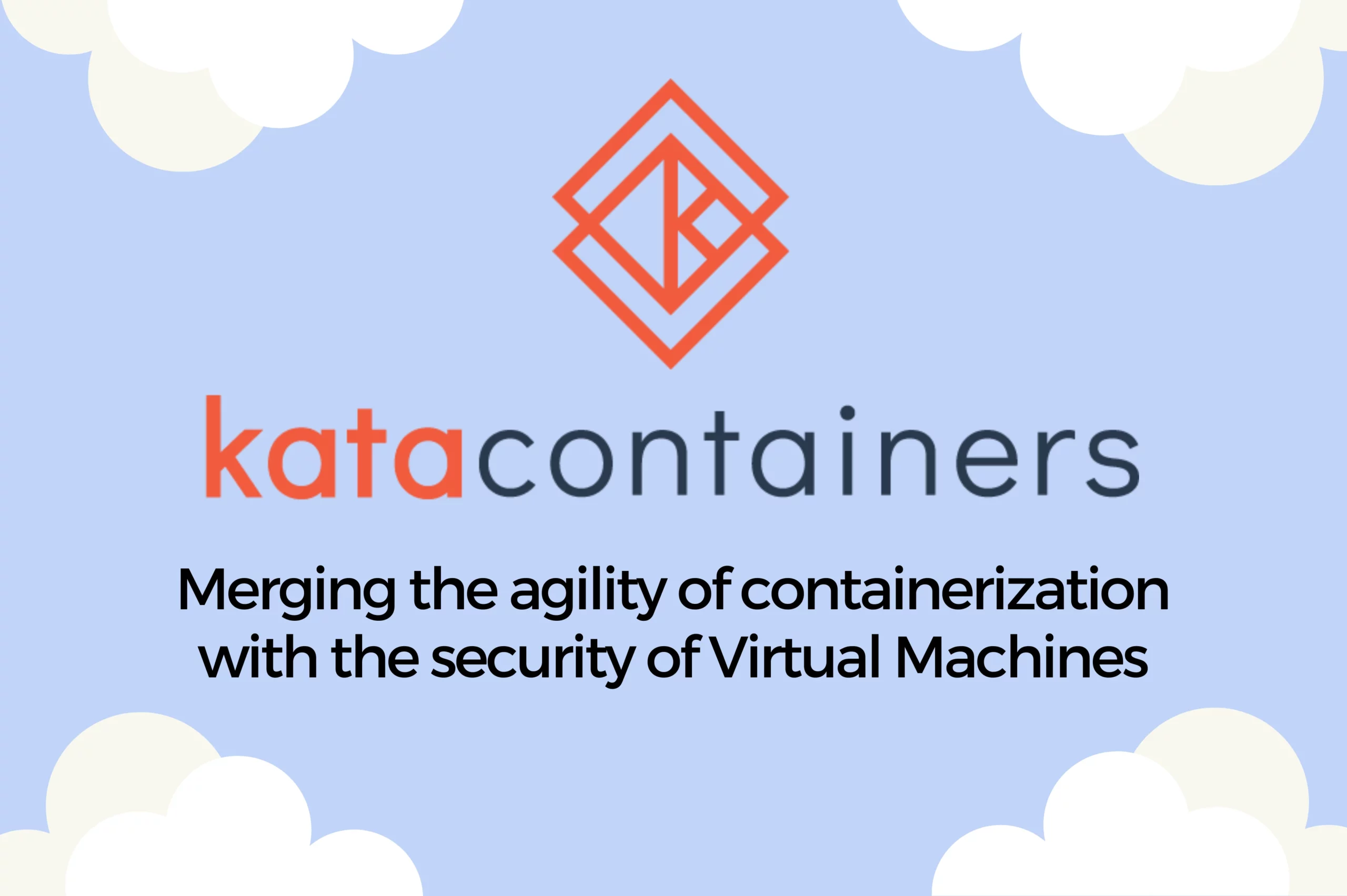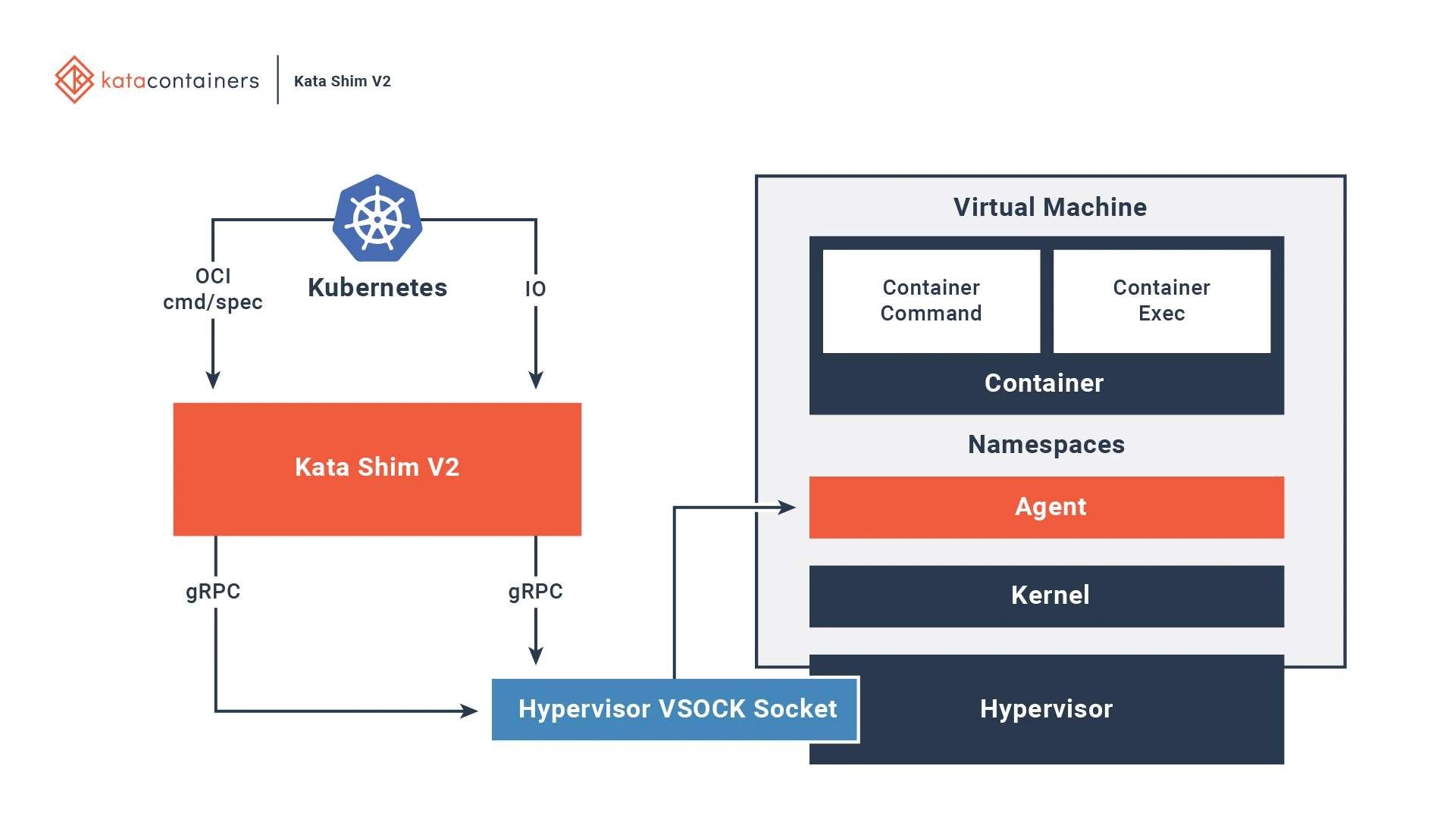Kata Containers: a Revolution in Container Isolation?
Container technologies, such as Docker, containerd and Kubernetes, have become an integral part of the cloud computing and microservices landscape. They provide lightweight, flexible, and cost-effective solutions for deploying, scaling, and managing distributed applications.
However, containers also face challenges in achieving the desired level of isolation, a crucial element for ensuring security in multi-tenant and enterprise environments. In this scenario, Kata Containers stands out as a groundbreaking solution.
Kata Containers is an open-source project and community working to build a standard implementation of lightweight, virtual machine-based containers. It aims to combine the security benefits of Virtual Machines (VMs) such as workload isolation and better security, with the speed and manageability of regular containers.
Open-source projects thrive on the collective inputs, ideas, and improvements of their community members, and Kata Containers is one of the examples. Kata community is stewarded by the Open Infrastructure Foundation (previously OpenStack Foundation), which supports the development and adoption of open source infrastructure all over the world.
Understanding Kata Containers
Kata Containers is essentially an implementation of container runtimes that uses lightweight virtual machines as an added security layer. It functions to isolate each container in its own minimal virtual machine, thereby providing the security of VMs while preserving the lightweight nature and ease of use inherent to container technology.
Kata Containers can seamlessly integrate with popular container orchestration platforms such as Kubernetes through the Container Runtime Interface (CRI). This means that organizations can adopt Kata Containers without having to alter their existing workflows or infrastructures significantly.The Kata Containers runtime can be plugged into these systems to handle specific workloads that need stronger isolation.
How do Kata Containers work?
The fundamental idea behind Kata Containers is combining the security advantages of virtual machines with the speed and flexibility of container technologies. In a typical container environment, all containers on a host share the same underlying operating system kernel. This is known as namespaced containers. Namespaced containers add potential security risks because when one container is compromised, there is a high chance that all other containers on the same host will be compromised too.
Kata Containers mitigates this risk by running each container in its own lightweight, kernel-based virtual machine (KVM). By doing so, Kata Containers ensures that each container gets its own isolated kernel, reducing the risk of cross-container vulnerabilities.
Visually the difference between Kata and typical containers can be seen on the figure below:
Architecture
Kata Containers follows a monolithic architecture that consists of three major components:
Kata Runtime:
It integrates with container platforms like Docker or Kubernetes. When a request is made to launch a container, the Kata Runtime steps in to create a new VM using the Kata Agent and Virtual Machine Manager (VMM). The VMM provides the isolation necessary for secure operations, and the Kata Agent runs inside the VM to control the container process.
Kata Agent:
This is a process that runs inside each VM and manages the containers and their workloads. The Kata Agent communicates with the Kata Runtime to control the lifecycle of the container within the VM where it runs.
Kata Containers Kernel:
This is a minimized version of the Linux kernel optimized for security and performance, providing a lean, minimalistic environment for the VM.
Hardware and Hypervisor
Under the hood, Kata Containers use well-known virtualization technologies. Project supports multiple hypervisors including QEMU/KVM, Firecracker, and Cloud Hypervisor. It also supports a variety of hardware architectures, including x86_64, ARM and PowerPC.
The resulting platform integrates with existing container orchestration systems such as K8s and its derivatives like OpenShift, providing an effective solution for running secure and isolated containers. The picture below demonstrates the architecture and shows how Kata Runtime, Agent and Kernel all come together and integrate with Kubernetes.
Key Features of Kata Containers
Enhanced Security: Kata Containers isolate each container within its own lightweight VM, offering an additional security layer. This isolation minimizes the risk associated with sharing kernel space between different containers, an issue commonly faced with standard namespaced containers.
Compatibility: Kata Containers are fully compatible with the Open Container Initiative (OCI) specifications, which means they can be deployed with existing container orchestration tools like Kubernetes without making any changes. It is also possible to use both Kata containers and traditional namespaced containers in one K8s cluster.
Performance: Despite providing an extra security layer, Kata Containers maintain high speed and boot time efficiency associated with traditional containers.
Hardware Agnostic: Kata Containers can run on any hardware that supports hardware-assisted virtualization technologies, including x86, ARM, PowerPC architectures.
The Future of Kata Containers
Given the rising security concerns in the era of distributed computing, the future of Kata Containers looks promising. Its ability to provide robust isolation without compromising performance makes it an attractive solution for enterprises dealing with sensitive data or running multi-tenant environments.
Given its open-source nature, this project is continually evolving with developers worldwide contributing to its improvement. This ensures that Kata Containers stays up-to-date with the latest security enhancements and performance optimizations, making it a sustainable choice for the long term.
In conclusion, Kata Containers is a still new technology that marries the agility of containerization with the security of virtual machines. As the demand for security and performance in the cloud computing landscape continues to grow, Kata Containers will undoubtedly play a significant role in shaping the future of container technologies.
Are you looking to secure your workloads in the cloud? Considering using Kata container runtime in Kubernetes?



